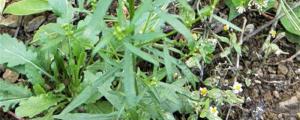How Can Acid Rain Affect Trees and Plants?
Acid rain is a phenomenon that occurs when pollutants, such as sulfur dioxide and nitrogen oxides, are released into the atmosphere, and react with water, oxygen, and other chemicals to form acidic compounds. Acid rain can have a devastating effect on trees and plants, leading to a range of negative impacts on ecosystems and the environment. Here are some of the key ways in which acid rain can affect trees and plants:
1. Damage to Leaves and Stems
One of the most visible signs of acid rain damage in trees and plants is the discoloration and decay of leaves and stems. Acidic compounds can directly damage the waxy, protective coating on leaves, leading to increased susceptibility to diseases, pests, and environmental stress. Stems can also become weakened and discolored, making them less stable and less able to conduct water and nutrients throughout the plant.
2. Soil Acidification and Nutrient Imbalances
Acid rain can also have a significant impact on soil quality and the availability of essential nutrients for trees and plants. When acidic compounds are deposited onto soil, they can lower the pH level, making it more acidic and less hospitable for certain kinds of plant life. This can lead to nutrient imbalances, with essential minerals such as calcium and magnesium becoming less available to plants, and toxic metals like aluminum becoming more concentrated.
3. Reduced Photosynthesis and Growth
The combination of direct damage to leaves and stems, and the effects of soil acidification and nutrient imbalances, can reduce a plant's ability to carry out photosynthesis and grow. Photosynthesis is the process by which plants use sunlight to convert carbon dioxide and water into energy, releasing oxygen in the process. When this process is disrupted or slowed down, plants may not be able to produce enough food to sustain themselves, leading to stunted growth, reduced fruit yield, and increased susceptibility to other environmental stressors.
4. Increased Vulnerability to Pests and Diseases
Acid rain-damaged trees and plants are often more susceptible to a range of pests and diseases, due to the weakened defenses provided by healthy foliage and stems, and the nutrient imbalances in the soil. Insects, fungi, and other pathogens can take advantage of weakened plants to establish themselves and reproduce, leading to further damage and potentially fatal infections.
5. Harm to Ecosystems and Biodiversity
Finally, the effects of acid rain on trees and plants can have serious consequences for entire ecosystems and the biodiversity they support. When entire populations of trees or plant species are damaged or destroyed by acid rain, habitats and food sources for other organisms may be lost, leading to ripple effects throughout the food chain. This can cause declines in populations of insects, birds, and other animals that rely on the affected vegetation, and can ultimately lead to destabilized ecosystems and reduced biodiversity.
In conclusion, acid rain can have a profound and lasting impact on trees and plants, with negative consequences for soil quality, growth and reproduction, and the health of entire ecosystems. To prevent and mitigate the effects of acid rain, it is essential to reduce emissions of sulfur dioxide, nitrogen oxides, and other pollutants that contribute to its formation, and to improve monitoring and management efforts to protect vulnerable plant populations.

 how many times do yo...
how many times do yo... how many planted tre...
how many planted tre... how many pine trees ...
how many pine trees ... how many pecan trees...
how many pecan trees... how many plants comp...
how many plants comp... how many plants can ...
how many plants can ... how many plants and ...
how many plants and ... how many pepper plan...
how many pepper plan...































